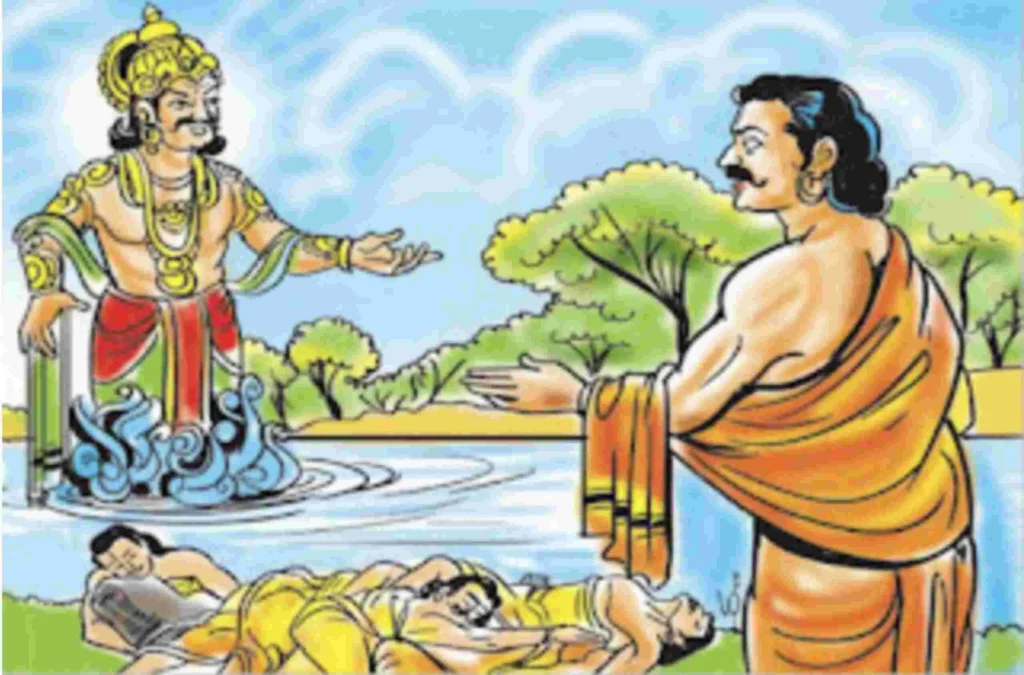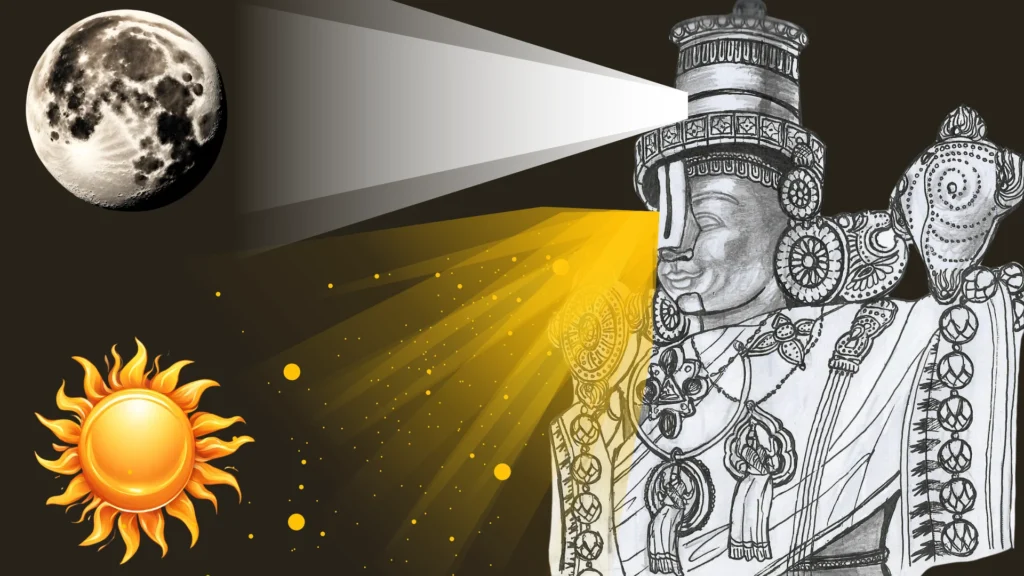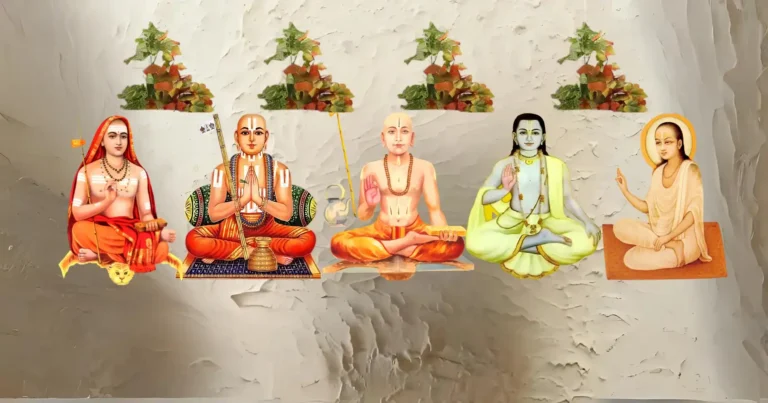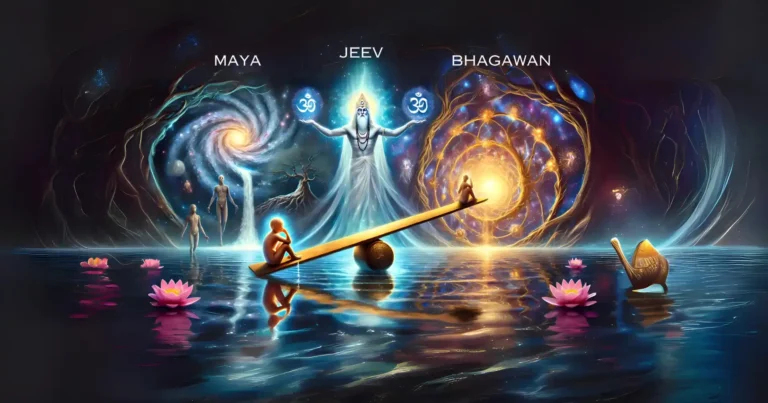Table of Contents
Who is a Dwija?
Dwija is a Sanskrit term for ‘twice born’. But, Sanskrit is a language with deeper meaning. The nuances of the language is hard to interpret. Let us see what King Yuddhistira answers the Yaksha in this regard.
One question that the Yaksha asked Yudhishthira was “Who is the one who is born, gets born again?” To this Yudhishthira answers “It is verily the Moon.”

Now one may wonder as to why the answer could not have been “Dwija”. A Dwija means a Brahmin. The one who is born twice. A Brahmin at the first time, physically takes birth from the womb of his mother. In the course of his life, he undergoes the holy thread investiture.
This event is considered to be his second birth whereby he attains the qualification to perform the rituals as per Shastra. After this ceremony, the Brahmin receives instructions of Jnana from his preceptor which gets him finally qualified to acquire the Vedas.
Yudhishthira was well qualified in Shastra, but it appeared he had erred this time. But, it was not so!
Sanskrit: One word, two meanings

The teeth is also called “Dwija” or twice-born. This is the beauty of the Sanskrit language. Teeth fall off once during our growing years and appear again. This fine aspect of human growth is taken care of by the language which points out the subtle meaning of the word Dwija. But, through the answer of Dharmaputra, we need to look deeper at what the Vedas are trying to tell us.
What is the subtle meaning of this answer?
Moon takes Birth Twice
Now, it is revealed by the Vedas that the Moon or Chandra (चंद्र) was born out of Manas (or the mind) while the Sun or Surya (सूर्य) was born out of the eyes of the Lord.

The Vedas describe the Sun’s eternal existence on Earth with the Lord’s grace that keeps falling on spirit souls. But, unlike the sun, the moon, fades and goes into a dark phase. It does not stay throughout like the sun. The dark phase of the moon is known as the waning moon.
However, when this cycle reverses, the moon comes out of the dark phase and enters the waxing period. The New moon is Amavasya (अमावस्या) and the Full moon is Purnima (पूर्णिमा).
Thus the Moon appears and disappears every fortnight and thus is born again and again.
Test your Alignment with the Spiritual Subject Matter (only 7-8 Questions)
The scores generated in this Quiz are relative. There are no right or wrong answers. A percentage towards 100 indicates that you are more aligned to the overall subject matter.
How is Moon related to the Mind?
There is significance in this cyclical behavior of the moon. Chandra dev (Moon God) represents the mind.

The nature of the mind is such that it repeats itself afresh every time. When we undergo trying situations our mind gets saturated. Due to the heaviness built, the mind concludes that there can be no other bigger problem. We define sadness in that state and conclude that we cannot become sadder than what we are today.
This is a fallacy. The future heralds an event that makes us sad again as if it were the first rise of sadness in the heart. The mind conceives events, circumstances, and opinions.
Our understanding of history is also our mind’s conceptions, which endlessly cycle like the phases of the moon. The mind never concludes.
Even though it promises that it shall never get startled, sad or happy again, all these experiences repeat from time to time. They are born again and again.
This is the deeper significance of Yudhishthira’s reply to the Yaksha.
How to Cope up with Changes in Life?
The teaching of the Shastra in this regard is that we should be following its injunctions with all sincerity.

That is the only criteria because just like the moon and the mind, everything in life is repetitive. Society shall accept us, praise us, and glorify us. Next time the very same society shall reject us, demean us and abuse us. All this, according to Shastra is the nature of the world, which is a product of the mind.
One need not worry about these waxing and waning situations. Following the preceptor’s instructions and following Dharma should only be the goal of man irrespective of how the mind responds to happiness and sadness. By sticking to Dharma, the mind shall be liberated at the opportune time.
This is the promise of the Shastra. Lord is the only one who is steady and un-flickering unlike our flimsy minds. The Lord always adjusts to the crankiness of the world. This is visible through the works of the Azhvars.
You display your love by reading this valuable material. So kindly read and consider financially supporting us to keep our efforts going with renewed vigor! Supporters in India can donate via Razorpay while those abroad can use PayPal!





